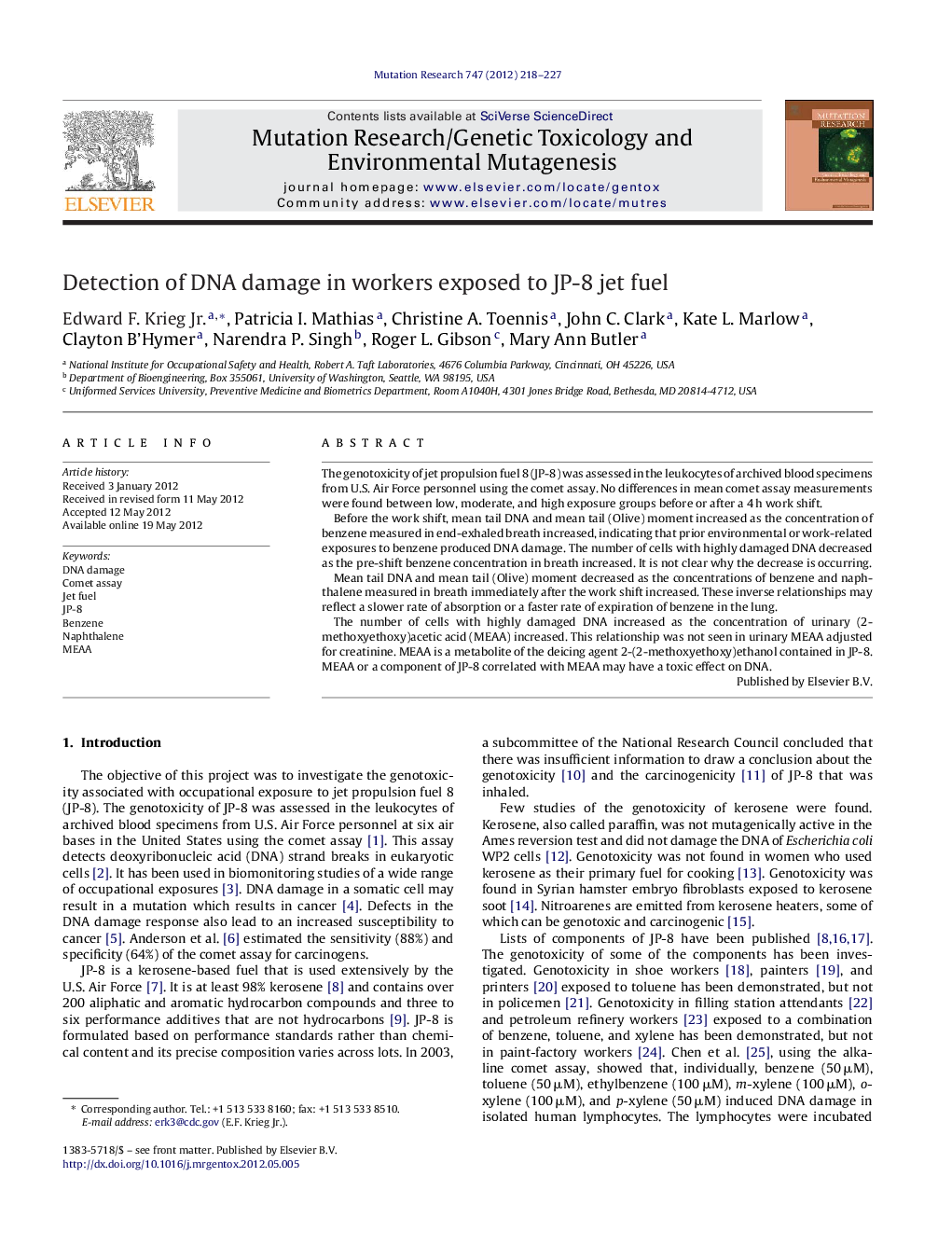| Article ID | Journal | Published Year | Pages | File Type |
|---|---|---|---|---|
| 2148213 | Mutation Research/Genetic Toxicology and Environmental Mutagenesis | 2012 | 10 Pages |
The genotoxicity of jet propulsion fuel 8 (JP-8) was assessed in the leukocytes of archived blood specimens from U.S. Air Force personnel using the comet assay. No differences in mean comet assay measurements were found between low, moderate, and high exposure groups before or after a 4 h work shift.Before the work shift, mean tail DNA and mean tail (Olive) moment increased as the concentration of benzene measured in end-exhaled breath increased, indicating that prior environmental or work-related exposures to benzene produced DNA damage. The number of cells with highly damaged DNA decreased as the pre-shift benzene concentration in breath increased. It is not clear why the decrease is occurring.Mean tail DNA and mean tail (Olive) moment decreased as the concentrations of benzene and naphthalene measured in breath immediately after the work shift increased. These inverse relationships may reflect a slower rate of absorption or a faster rate of expiration of benzene in the lung.The number of cells with highly damaged DNA increased as the concentration of urinary (2-methoxyethoxy)acetic acid (MEAA) increased. This relationship was not seen in urinary MEAA adjusted for creatinine. MEAA is a metabolite of the deicing agent 2-(2-methoxyethoxy)ethanol contained in JP-8. MEAA or a component of JP-8 correlated with MEAA may have a toxic effect on DNA.
► U.S. Air Force personnel exposed to JP-8 wore personal protective equipment. ► Measurements of DNA damage were made before and after a 4 h work shift. ► No differences in comet assay measurements were found between exposure groups. ► (2-Methoxyethoxy)acetic acid (MEAA) is the metabolite of a JP-8 deicing agent. ► Post-shift, the number of cells with highly damaged DNA increased with urinary MEAA.
